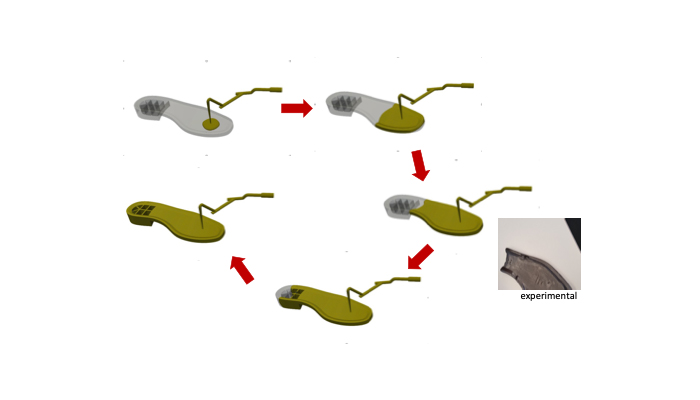The industrial footwear sector in Portugal has managed to remain in a prominent position in the international markets, essentially due to the knowledge acquired over the many years of experience and a substantial creativity. However, the worldwide competitiveness of the sector has been increasing significantly.
In fact, the growing demands of a market regarding individualized products, have promoted the incorporation of innovative manufacturing techniques, as is the case of additive methods. As happens in several fields the possibility of resorting to appropriate computational modelling tools, may help to optimize production processes, products and the introduction of new processes.
Today’s challenges
The injection molding of shoe soles comprises several parameters that must be defined by the designer, namely: mold geometry, gate (inlet) location, air vents location, injection temperature, mold temperature, among several others. Currently, the process of designing molds for shoe soles follows mainly empirical trial-and-error approaches, which require long processes that normally involve an excessive number of interations and seldom allows achieving optimal solutions.
Every iteration requires the manufacturing of a mold and experimental tests, which are time and raw material consuming. Moreover, the information that can be collected in experimental tests is limited, which difficult the identification of the best corrections to perform. For instance, even with short-shots (partially filled cavities) the information about the flow-front progress and the location of the weld lines (places where independent flow fronts merge) is limited.
How computing is fighting them
In the design task, the possibility of adding a simulation phase prior to the experimental work – which allows obtaining detailed information about the process (e.g. flow front evolution) and with which the relevant process parameters can be optimized – brings clear advantages. For instance, the appropriate location for the air vents and can be identified/tested and the gate location can be adjusted to assure that the weld lines (which result in weaker regions) are not in critical places of the shoe sole.
This case study joins University of Minho and the company Atlanta – Componentes para Calçado, Lda, and aims at resorting to process modeling to support the design of injection molds for soles to optimize both the manufactured products and the production processes.
The work is being developed in the framework of the mobilizer project GreenShoes 4.0- “Footwear, leather goods and Advanced Materials, Equipment and Software Technologies” (POCI-01-0247-FEDER-046082).
The Greenshoes 4.0 project joins 23 entities, including 15 companies from the Portuguese Footwear industry and aims at contributing to their digital transformation. The project activity comprises the application of previously developed codes to support the design of current manufacturing processes and products, and the implementation, verification and test of new codes to model novel manufacturing processes.
